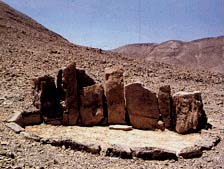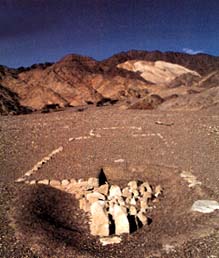Desert Masseboth: A Gallery of Types
Sidebar to: Sacred Stones in the Desert

In the accompanying article author Uzi Avner focuses on masseboth (standing stones) that represent deities and their abodes at scores of desert shrines, such as the impressive installation at Ma‘aleh Jethro, in the Uvda Valley, an area about 30 miles north of Eilat that is exceptionally rich in archaeological remains. He notes, however, that many different kinds of masseboth also stand as part of hundreds of tumuli (heaps of stones marking burial places) and open sanctuaries. Counting those, he says, would “mean more than a lifetime project. In all the Negev and Sinai they would reach the thousands.”
The photographs shown here offer a glimpse of the diverse masseboth that still bear witness to the intriguing and enigmatic religious impulses of those who erected them thousands of years ago in the Negev desert.

When new construction threatened a southern Negev burial site (6000–5000 B.C.E.), archaeologists carefully moved it to a nearby desert site to preserve it. Not only were the rocks (and the plainly visible masseboth) within each tumulus painstakingly reconstructed, but the layout and appearance of the entire original site, including the relative distances among the numerous tumuli, were preserved.
Already a library member? Log in here.
Institution user? Log in with your IP address.

